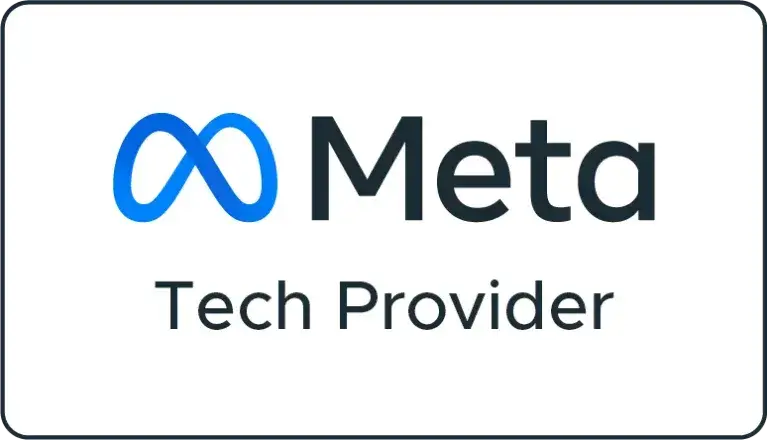Introduction

For all the reasons stated above, the ability to create impactful digital marketing campaigns is critical for anyone serious about making their business earn more. The competition is tough for anyone who operates within a digital space, with the amount of information flowing towards an average online consumer overwhelming. One has to be able to create successful campaigns that convert, or they risk going out of business. Let this guide be your guide in the uncertain world of digital marketing, help you find your path, and succeed.
This step-by-step guide aims to demystify the process of building digital marketing campaigns, providing digital marketing professionals and aspiring students with actionable insights and learning practical methods to develop successful campaigns that deliver desired outcomes. From setting clear objectives, selecting the proper channels, crafting compelling messaging, and measuring ROI, this guide will provide you with the necessary information and tools to empower needed to plan, execute, and optimize successful digital marketing campaigns.
Whether you’re an experienced marketer or a rookie aiming to hone your craft or simply figure out how everything works, get ready for the ride of your life. Join me as we set our sights on becoming the ultimate masters of artfully crafting digital marketing campaigns that grip the audience, spark interest, and produce tangible outcomes. Here we go!
Understanding Digital Marketing Campaigns
In the dynamic realm of digital marketing, campaigns serve as the backbone of strategic initiatives to achieve specific objectives and drive desired outcomes. But what constitutes a digital marketing campaign, and why must businesses grasp its essence?
Definition of Digital Marketing Campaigns:
A digital marketing campaign is a coordinated series of strategic actions and promotional efforts utilizing diverse digital platforms to attain precise business goals. These objectives range from increasing brand awareness and driving website traffic to generating leads, acquiring customers, or boosting sales.
Importance of Effective Campaign Planning and Execution:
Therefore, digital marketing campaigns play a critical role in determining how a brand is perceived, strengthening customer relationships, and ultimately boosting sales and revenue. For instance, through targeted marketing campaigns, an organization can achieve the following:
Portfolio management-campaigns aid in disseminating brand information to a large number of consumers through digital channels, increasing awareness and recall.
Drive consumer engagement- a business can obtain and precisely target its preferred audience using a campaign and deliver cohesive, tailored messages that entice the audience to trust and become loyal to the product.
Increase acquisition and sales-campaigns lead to the desired consumer’s behavior action, translating to a purchase or subscription to a newsletter or a reading download.
Performance tracking and measurement campaigns can be monitored on a digital platform in real-time to check the audience’s behavior as well as the campaign’s effectiveness and return on investment.
Mastering digital marketing campaigns is, thus, not about the tactical soundness of any given one but about how the aforementioned components come together to form a cohesive strategy that stays true to the business’s underlying strategy and appeals to the intended audience. With optimal planning and execution, businesses can achieve their full potential in digital marketing and become a major success formula in the digital era!
Setting Objectives and Goals

Achieving success, especially while planning and executing a digital marketing campaign, would be difficult if you do not have a set of clear objectives and goals to remain focused on your strategic paths of actions and measure your Success. Objectives provide your operations with a roadmap or end goal, while goals direct you to track your progress or something measurable. To achieve these objectives and goals, consider the following steps:
Defining clear objectives for your digital marketing campaign should include the following steps:
Start with defining your overarching goal. Would you like to raise brand awareness, increase your website traffic, generate leads, increase sales, or accomplish any other goal?
Ensure your goals are SMART: Specific, Measurable, Achievable, Relevant, and Time-bound. In other words, you should set defined, measurable, attainable relevant to your overall plan goals and set a time frame for each of them to help you keep motivated. This is another source of clear expectations and responsibilities. You should also consider your target audience and market and rivals. Define your goals according to the needs and preferences of your target audience.
Establish the goals that can be measured: for example, determine the ways to calculate the accomplishments. Numbers are essential, so make them count. Once you have established your objectives, put them in measurable prospective. Determine key performance indicators for each goal. For example, if you want to increase your website visitors, the KPI will be the number of the website visits, as well as the number of views, and bounce-rate.
Assign numerical targets or benchmarks to each goal to provide a clear benchmark for Success. Whether it’s a percentage increase in traffic, make sure your goals are attainable and measurable, whether it’s a certain amount of leads generated or a specific revenue target.
Align Objectives and Goals with Business Priorities:
Make sure that your campaign’s objectives and goals are aligned with your general business priorities and objectives. Reflect on how achieving campaign objectives would assist in the development and achievement of the business. As a result, expanding market share, increasing client retention, or introducing a new product should all have campaign goals that align with your business goals.
Setting clear objectives and goals for your digital marketing campaign helps to give directions to your strategic efforts and predefine the criteria for assessing your success. Clearly defining them serves as a basis for your planning, execution, and optimization of the streamlining process and, in turn, increases the probability to reach some successes.
Conducting Market Research
Market research is undoubtedly one of the vital components of a successful digital marketing campaign. It helps to understand more about the target market, competitors and prospective opportunities within the industry. Thanks to the market research, you can get more information about the needs, preferences and problems of their audience and create a unique selling proposition. The most effective ways of conducting market research include:
Define target audience demographics, interests, and behavior
Set the definition to your target audience with demographic aspects like age, gender, location, and any other helpful data that represents them. It may be gathered from already available data.
Segment your audience into groups that have similarities and common characteristics, interests, and behavior. Market segmentation approaches can be applied.
Appointment to qualitative insights regarding their preferences, attitude, and purchase behavior. It may be surveys, interviews, or focus groups.
Competitors’ strategies
Industry trends conduct competitor analysis to reveal insights about the digital marketing strategies, tactics, and positioning used by them. Spot gaps, opportunities, and differentiation that will impact optimizing your campaign strategy. Keep up with industry trends, new technologies, changes in the consumer behavior, and anything that can impact your campaign. Transition slide: Icon:
Data and analytics tools:
Frequent quantitative insights on your audience’s online behavior, preferences, and brand engagement through data and analytics tools. Use website analytics and social media metrics for optimization. Real-time monitoring of campaign performance on Google Analytics, Facebook Insights, SEMrush, and so on helps to track KPIs.
Conducting thorough market research helps achieve a comprehensive view of your audience and competitors, as well as the industry as a whole, which will allow you to elaborate a high-performing campaign strategy based on data and aligned with your audience’s real needs as well as generate relevant results. Following the clearly established path is what sets the stage for a successful digital marketing campaign, as planning, executing and adjusting will be streamlined.
Crafting Compelling Messaging and Creative
Develop messaging and creative assets that are convincing and eye-catching; that is a major aspect of both your digital marketing campaign to hold your target audience’s attention and encourage them to engage. Your messaging must communicate your UVP while also resonating with your target market, and your creativity in Singapore must be visually desirable and in line with your brand identity.
Developing a Unique Value Proposition (UVP):
– Begin by differentiating your brand from competitors and articulating to customers why they should choose you over others.
– Craft a concise and compelling UVP that communicates the unique benefits and value you offer to your target audience.
– Identifying your audience’s pain points and demonstrating how your products or services can help alleviate their issues or fulfill their needs when communicating with them is crucial.
Creating Persuasive Messaging:
– Tailor your messaging to resonate with your target audience’s interests, preferences, and aspirations.
– When you communicate, use straightforward language and compelling arguments. It is essential to avoid using technical terms and jargon that might confuse or distance your audience. Instead, try to use easily understandable and relatable language to your intended audience. This will help ensure that everyone receives and understands your message.
– Highlight your products or services’ key benefits and features, emphasizing how they address specific pain points or deliver tangible value to customers.
Designing Engaging Visuals
- Develop visually appealing creative assets that catch the eye and represent your brand through branding, such as images, videos, infographics, and animations.
- Make sure your visuals are on-brand: The colors, typography, and style you use should complement your brand’s values.
- Optimize your creative assets for different digital formats and devices: Visuals should be more visually appealing and user-friendly on various platforms and screen sizes.###Testing and Iterating
- A/B or split test your messaging and creativity to figure out which works best with your audience.
- Use data to discover and refine: look at the campaign’s data and request input from your audience to see what you can do differently.
- Revise your messaging and creativity based on data and feedback: You can test new ideas and iterate on the campaign.
Craft attention-grabbing messaging and creative assets: you can attract your audience’s attention, communicate your brand’s unique selling point, and give an impulse to the action through smart messaging and visually appealing creativity.
Selecting the Right Digital Channels
Choosing the most suitable digital channels for your campaign is crucial for effectively reaching and engaging with your target audience. There are plenty of digital platforms out there, each with its unique features and audience. However, it is critical to choose the channel strategies that align with your marketing campaign objectives and will reach out to your target audience. How to choose the right digital channels for your campaign:
Knowing the preferences of your audience:
Find out your target audience’s online hangout spots and their preferred networks for interacting with brands and consuming content.
Field audience analysis and learn their preferred communication and social media platforms, as well as online behaviors. Before you make your channel selection, make sure it aligns with your audience’s ideal preference, allowing you to get in touch with them where they are most lively and more receptive.
Matching Channels to Goals
When choosing the best digital marketing platforms for your project, be sure to factor in the following:
- How well do the affiliates match your goals and objectives: in general or specific ones?
- Various channels can be better suited to different objectives; if you are primarily interested in achieving brand recognition, social media will be the best option, while for lead formation and nurturing – email marketing is indicated.
- How important are the features and capacity of publishers to your campaign strategy: targeting users or formats of commercial?
Evaluating Channel’s Users Reach and Efficiency
The following points must be considered:
- On the scale of the audience and its involvement, also in profitability: how much of your target audience can be reached through publishers, and how much interaction is it possible to expect?
- It would help if you relied on the data of the audience analysis and analytics services to choose publishers: in case several options are proposed, give preference to the one with which it will be easier to reach the audience.
Ordering Multi-Channel Participation
Finally, even though you must choose only one publisher, this is not all that is required of you. Keep in mind the following: Strategic selection of the appropriate digital channels for the campaign or promotion, by which you can enhance your reach, engagement, and influence as well as reach, interact with, and lift your desired audience, opting for the channels that closely correspond to your goals and consumer, such as social media, email marketing, search advertising, and content marketing.
Creating a Content Calendar and Campaign Timeline
One way of making the campaign easier to manage would be to create content calendars and timelines for the campaign. So, the content calendar is a detailed map of the campaign with a look of an interesting and attractive poster with time, frequency, and the distribution of the materials over the internet. In other words, a content calendar is your campaign’s schedule. A timeline, on the other hand, is a broader view of your whole campaign content in one place, and for example, it can be a month or two-month calendar.
Establishing Campaign Milestones and Deadlines:
– Define your campaign’s start and end dates, including key milestones.
– Break down your campaign timeline into manageable phases or stages, each with objectives, tasks, and deadlines.
– Set realistic content creation, approval, and publication deadlines to ensure your campaign stays on track and meets its objectives within the specified timeframe.
Mapping Out Content Themes and Topics:
What are the big-picture themes and topics underlying your campaign content and messaging?
How can you organize these themes and topics into a cohesive content calendar that highlights specific topics, formats, and critical messages on any given day, week, or month while remaining relevant to your campaign objectives and audience’s interests?
Based on most topics, can you integrate seasonal or timely themes to capitalize on emerging trends or events that are likely to resonate with your audience?
Allocating Resources and Assigning Responsibilities:
What kind of resources, budget, and manpower do you need to execute your campaign? For stakeholders and team members responsible for developing, distributing, and promoting content across whatever platform, apportion clear roles and responsibilities.
Define specific expectations and communication streams to ensure high-level, efficient teamwork and a smooth workflow throughout the campaign’s lifetime.
Incorporating Distribution Channels and Engagement Tactics:
What channels and platforms will they use to distribute and market the campaign content on digital platforms?
When and how frequently will you deploy content distribution schedules to meet audience engagement timelines, engagement hours, and platform algorithms?
Finally, add engaging content features such as contests, polls, and other interactive content on your content calendar to enhance the audience’s engagement and the customers’ user experience. In summary, with a robust content calendar and a well-thought-out content plan, you can simplify your campaign planning process while keeping all digital activities and objectives uniformed and well-coordinated. Through clear checkpoints, established tasks, and efficient stakeholder engagement, you will keep your campaign on track throughout the implementation phase, and you will accomplish your campaign objectives within the set time.
Implementing Tracking and Analytics
In order to evaluate the performance of your marketing campaign, determine its success, and make well-informed data-driven adjustments to obtain the best results, you need to have a solid tracking and analytics system in place. You can acquire the needed information and analyze audience behavior, campaign performance, and ROI using data and analytics platforms. The following is a guideline on how to track and record to use for your campaign:
Setting Up Tracking Mechanisms:
– It’s important to use tracking tools like Google Analytics, Facebook Pixel, and LinkedIn Insight Tag to monitor user interactions and behavior across all digital channels.
– Implement tracking parameters and tags to capture data on website visits, page views, conversions, and other vital metrics relevant to your campaign objectives.
– Ensure tracking codes are correctly installed and configured on your website and digital assets to capture and report data accurately.
Define Key Performance Indicators :
List down key performance indicators directly impacting your campaign objectives and targets. Include measurable KPIs that are relevant and act as an indicator of the successfulness of the campaign, for example Conversion rate, Click Through Rate, Engagement Rate, ROI, etc. Also, set KPI benchmarking as the mean competitors and assess their importance.
Analyze Performance data:
Analyze performance data from your tracking systems & analytics on a regular basis to find hidden gems about your audience, campaign performance & ROI. Understand the patterns, trends, and areas of opportunity into each area of performance once you have perf and KPIs. Divide the data into demographics, device type, time of day, location, and other segments influencing your campaign to expose insights and opportunities related to those segments.
Make data-based optimizations:
Use the insights from performance data to implement improvements and modify your campaign strategy. Test different message testing, creative versions, and targeting combinations to determine what resonates most with your audience. Implement improvements based on data-driven insights, and develop and improve your performance to improve campaign performance and ROI over time.
Utilizing tracking and analytics with your digital marketing campaign enables you to grasp your viewers’ activities on a more profound level, determine how effective your work is progressing, and take rational measures that help you increase your performance in order to meet your campaign goals. Developing a strategy sounds simple with the right statistics and analytics, which goes with dynamic modifications, accurate asset allocation, and pivotal results for your business.
Testing and Iterating
It is impossible to implement a successful digital marketing campaign without testing and iterating. These practices can help you refine a strategy, improve performance, and achieve better results, provided you rely on them continuously. Through running experiments, gathering feedback on their results, and acting according to data, you will be able to refine the level of your campaign better. There are four steps that will help you test and iterate successfully:
A/B Testing:
- Experiment with various nuances of your marketing campaign, such as all of your ad copy, imagery, calls-to-action, and even landing page design.
- Divide your audience into smaller parts and compare the performance of each variation. Then, use a software solution to find the accurate winner. It must be excluding every alternate target variable so you might know what genuinely factors have the best success.
Analyzing Performance Data:
- It is always advisable to keep the track of the KPI s and metrics as high open rates, engagement rates, conversion rates, and performance statistics.
- Use the data from A/B test to find which variation has the highest engagement rates, conversions, and overall ROI .
- Use the data to analyze trends, patterns, and insights that can help you identify areas of improvement and optimization.
Feedback Gathering from Stakeholders and Audience:
Keep getting performance-based feedback from internal stakeholders such team members or clients who can have an external perspective and do not naturally align with the model.
Get feedback from input sources such as surveys, polls, social listenings or any other feedback form to determine the reception of your campaign and your target audience’s usability of your model.
- Use feedback to identify any pain points, obstacle of your creative process that response is low or non-exist and then use it to reformat your campaign.
Iterated Based on Insights and Learnings
Use what you found from feedback, the A/B testing, and data insights to improve areas of your campaign to understand what to adjust. Make the changes and use boosts what your testing insights have seen, focus on getting the pandemic result over the boost. Continue iterate strategy in your campaign and build and evolve your messaging to improve overall.
Testing and iterating on your digital marketing campaign will allow you to discover valuable insights, fine-tune your approach, and achieve great results in the end. Relying on an experimentation and learning culture, you will be able to adjust your strategy to man changes in the market, your audience’s needs and wants, and other factors, and make your campaign successful in the long run.
Measuring ROI and Evaluating Success
To understand whether the digital marketing campaigns are beneficial for the business, it is important to achieve the goal of evaluating the Return of Investment and return on the advertising effort. Measuring the usage/impact data generated by your campaign and how they compare to your established targets means that you can get to understand how well your campaign has done for you and whether you should invest in it again. Here’s how to measure ROI and evaluate success:
Calculating Return on Investment (ROI):Calculating Return on Investment (ROI):
- Estimate the overall cost that you will ineqxy for your digital marketing campaign and this may include factors such as advertising budget, content acquisition and labour costs.
- Jun 25, 2015 Total Revenues or Value Created from the campaign The total number of sales, leads, conversion rates, and any other tangible result from the campaign must be stated here.
- Use the formula: ROA = (Cost + Profits – Sale of assets) / Sale of assets to determine the return on investment after taxes as a ratio.
- Treat the ROI number as comprehensive, by comparing it to the industry standards or previous similar campaign to estimate its degree of success and efficiency.
Assessing Key Performance Indicators (KPIs):Assessing Key Performance Indicators (KPIs):
- Look at the overall conversion rate for your ad campaign as well as the click through rate (CTR), rate of engagements, and customer acquisition cost (CAC).
- It can be expressed in terms of comparing KPIs to set goals and benchmarks to consider whether the launched campaign was effective to meet the program objectives and to provide expected results.
- To make an analysis in case with your benefits in comparison with key competitors, pay attention at trends, patterns, and correlations in KPI data as far as the campaign performance is concerned.
Analyzing Customer Lifetime Value (CLV):
– Consider the long-term impact of your campaign on customer lifetime value (CLV) by analyzing metrics such as customer retention, repeat purchases, and customer satisfaction.
– Calculate the CLV of customers acquired through the campaign to determine the overall value generated over their lifetime relationship with your brand.
– Use CLV analysis to assess your campaign’s true impact and profitability beyond immediate revenue generation.
Collecting Feedback and Gaining Insights:

Collect the feedback from your stakeholders, customers, and internal team members. By doing this, you can get insights into what they perceive and experience from the campaign. Always get qualitative feedback post-campaign through interviews, focus groups, and surveys to identify what works and what needs improvement.
The feedback and insights should direct your marketing campaigns and optimization plans. Learn from your shortcomings during campaigns to improve your marketing and campaigns.
The success or failure of a digital marketing campaign can be weighed by measuring its ROI. Measurement helps understand the impact on the business, find areas for improvement and increase future outcomes. Companies can harness the power of data-driven analysis to develop the most effective strategies for allocating resources and investing in marketing to achieve increased ROI.
Conclusion
In sum, the process of creating effective and efficient digital marketing campaigns is an intellection, tactfully formed and implemented, and ever-modifying procedure. This blog post highlights a clear and well-structured approach to creating digital marketing campaigns that resonate with the target audience as well as convert the viewers into active customers to those practicing digital marketing careers as well as to those users aspiring to become practicing digital marketing specialists soon. In other words, each of the activities mentioned above is an essential aspect of a campaign and may include activities such as formulation of objectives, market analysis and understanding the audience, determination of the type of message to be conveyed, selection of channel that best suits the campaign and so on.
Finally, when you are beginning to set up your own digital marketing initiatives, ensure that you apply data and analytics to communicate performance, report/decide on ROI and decide on your strategy and change.
Speed is of the essence in digital marketing today . To set the pace, succeed with business objectives as well as leave competitors in the dust, ensure your campaigns are impossible to turn a blind eye, and not just remain a surefire way to win the marketing game. Absorb the principles and strategies outlined in this guide and unlock your business’s real digital powers and results on a level you never thought possible, and by that we mean campaigns for the ages – or in short, campaigns that literally blow off minds. Cheers to the campaigns that evoke adoredom, spur actions, and guarantee the wows!













